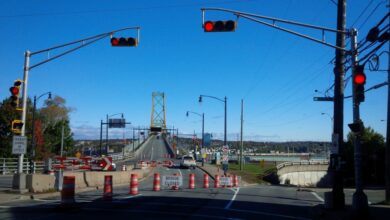The Grand Parade podcast: Who wields the most power with Halifax’s Housing Accelerator Fund plans?

Some good news on Halifax’s housing front: Construction is booming across Nova Scotia—and the bulk of those new units underway are in the HRM. In the first three months of 2024, the province saw more housing starts—2,158 units—than in any other first quarter in its recorded history. It’s about time.
Both Halifax and Nova Scotia are staring down significant housing shortages that have led to a host of ills, from anemic vacancy rates (and dubious rental practices) to an ever-growing unhoused population. A 2022 Municipal Housing Needs Report found that the HRM was short 17,500 units and would need 52,050 units by 2027, while a 2023 provincial report concluded that Nova Scotia is in need of between 25,000 and 30,000 units. And both the city and province are poised to grow even more.
Last October, the federal government announced it was giving the HRM a $79-million boost through its Housing Accelerator Fund in order to close the gap through zoning changes that would allow for more housing units everywhere. The initial plan was to “fast-track” 2,600 housing units over the next three years, with more than 8,866 homes over the next decade. That would come through density changes allowing for a minimum of four residential units per lot (connected to municipal services like water and wastewater), and up to eight units within the urban core of Halifax and Dartmouth. The money was also supposed to come in exchange for increased density “within walking distance of post-secondary institutions.”
But, in a page ripped straight from the intro to Avatar: The Last Airbender, when our city needed a hero most, they vanished. At the HRM’s Heritage Advisory Committee on Apr. 17, the city walked back its ambitious—and much-needed—density plans around the university core, which would have permitted nine storeys in an area that could certainly do with more student housing.
The end result is a good housing density plan with a major omission—and one that undermines Halifax’s own aims to build walkable, bikeable neighbourhoods that are less reliant on cars. Instead, while Halifax could see 200,000 homes built in the years to come, more than two-thirds of those homes would be built within suburban areas—commuter neighbourhoods, more or less—rather than the urban core.
In this week’s episode of The Grand Parade podcast, Coast reporters Matt Stickland and Martin Bauman chat with economist Deny Sullivan about Halifax’s HAF blunders and why a labour shortage isn’t to blame for the city’s housing crisis. Plus, they delve into Halifax’s deferred plans to abandon its Strategic Road Safety Framework in favour of a new plan that is worse than the old one.



